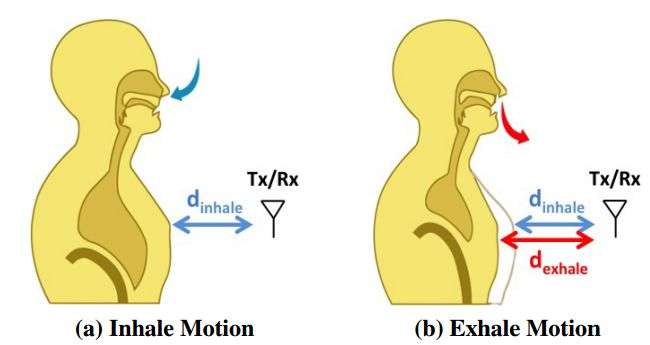April 25, 2015 weblog
MIT team's wireless Vital-Radio could follow breathing, heart rate at home

Homes with the accompanying tag of "smart" are often described as deploying devices that can tell the temperature and air quality as signals of the home's health status. What about residents' health status? A team from MIT believe that, as health-monitoring technologies advance, future smart homes will not only monitor the environment but also people's vital signals such as breathing and heartbeats.
They are taking a bold move in that direction by introducing their Vital-Radio, which is a wireless sensing technology that monitors breathing and heart rate without having to use any body instrumentation. No nasal probes. No special mattresses. No chest bands. Vital-Radio does not require the user to face the device or to be aware of its presence. In fact, they said, Vital-Radio can monitor the vital signs of multiple people simultaneously.
Details of their work are in their paper, "Smart Homes that Monitor Breathing and Heart Rate," by Fadel Adib, Hongzi Mao, Zachary Kabelac, Dina Katabi and Robert Miller.
The users can be sleeping, or awake. As such, they faced a challenge in working on this technology of any motion in the environment affecting the wireless signal and interfering with the tracking focus. "Past work addresses this challenge by requiring that only one person be present in front of the device and that the person remains still. In contrast, Vital-Radio recognizes that one can address this problem by building on recent technologies that localize users using wireless signals. Specifically, Vital-Radio first localizes each user in the environment, then zooms in on the signal reflected from each user and analyzes variations in his reflection to extract his breathing and heart rate. By isolating a user's reflection, Vital-Radio also eliminates other sources of interference including noise or extraneous motion in the environment, which may otherwise mask the minute variations due to the user's vital signs," they said.
While Vital-Radio can do the job for any healthy person ("Do my breathing and heart rates reflect a healthy lifestyle?"), the device could also support parents concerned about their children ("Does my child breathe normally during sleep?") or for those caring for the elderly, checking on irregular heartbeats. Healthcare professionals caring for the same could find the information helpful.
"Breathing and heart rate would be interesting in hospitals if you want to monitor people without having things on their body," said team member Fadel Adib, in New Scientist.
For hardware, they reproduced a FMCW radio designed by past work on wireless localization. FMCW stands for Frequency Modulated Carrier Waves, a radar technique. They said that the device generates a signal that sweeps from 5.46 GHz to 7.25 GHz every 2.5 milliseconds, transmitting sub-mW power. The parameters were chosen so that the system would be compliant with FCC regulations for consumer electronics. The radio connects to a computer over Ethernet. They said that the received signal "is sampled (digitized) and transmitted over the Ethernet to the computer for real-time processing."
They built a Vital-Radio prototype and validated its capabilities through experiments with 14 subjects. During the tests, participants wore daily attire: shirts, T-shirts, hoodies and jackets of various fabrics. The authors said that "Vital-Radio can indeed capture our vital signs and track them accurately even as they vary." Across the experiments with multiple subjects, they stated, Vital-Radio's median accuracy in measuring breathing and heart rate was 99.4% and 99%, respectively.
According to New Scientist, Adib said the team was honing the system to the point where a fetus's heartbeat inside its mother could be monitored.
More information: Smart Homes that Monitor Breathing and Heart Rate (PDF): people.csail.mit.edu/fadel/pap … vitalradio-paper.pdf
© 2015 Tech Xplore


















